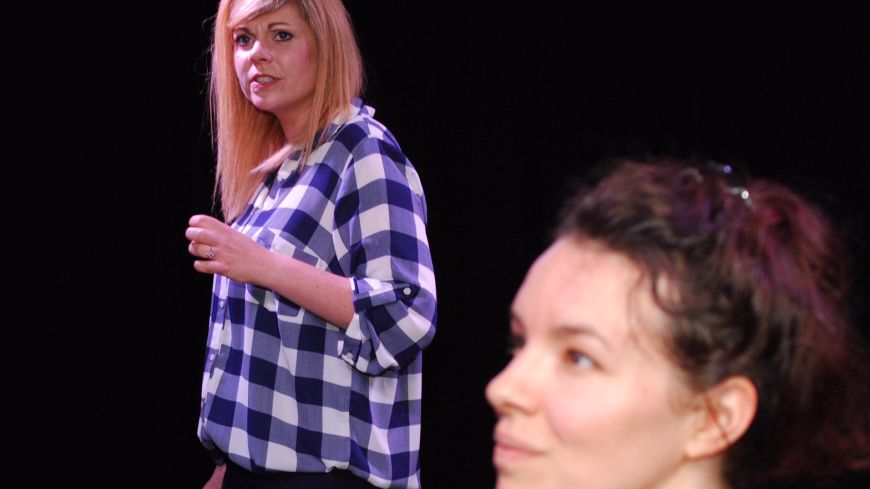
“If I feel physically as if the top of my head were taken off, I know that is poetry” ― Emily Dickinson (1830-1886)
“Let me live, love, and say it well in good sentences” ― Sylvia Plath (1932-1963)
Poetry is described as language at its most distilled, profound, emotional. Two of America’s most inspirational poets were Emily Dickinson and Sylvia Plath, were born and brought up a century apart in the state of Massachusetts. The other coincidence which links these women together, is the fact that they both enjoyed the traditional country art of bee-keeping.
With editorial skill and rich imagination, Clare-Nel Haddon has dived and delved into their anthologies and biographies to compile an evocative, painfully sad portrait of these two writers.
The play opens with a curious medley of recorded readings, snippets of poetry and letters, with intermingled, indistinctive crossover voices. But after this confusing start, we are takien on a much clearer dramatic journey.
On a brightly-lit stage, are two garden chairs, cloth-covered table and a large jar, depicting a hive. The period is perhaps the mid 1850s, and Emily is sitting with a contemplative gaze, shrouded in a corseted gown and shawl, brown boots, dark hair pinned up in a bun, her face devoid of make up. Time travel to the 1950s, and here’s the radiant young Sylvia, with wavy blonde hair, red painted lips and nails, dressed in a blue and white checked shirt, Capri pants, bare feet.
The contrast in their fashionable images is all that separates them. They share a love of literature and language. Emily is longing for “poetic sympathy and renown, an ungratified desire for distinction”, but from 1,700 extant poems, just a handful were published in her lifetime. Even the modern day Sylvia is conscious of the fact that she is a woman with breasts and a uterus, her primary role is to be a wife and mother, not free to travel and devote time to writing.
Through short recitations from their poetry and letters, we get under their creative skin and intelligent minds, with Emily caring for and calming the bees in the garden. It is then fascinating to learn that Sylvia’s father, Otto, an entymologist worte a book “ Bumblebees and their Ways” (1934) but tragically he contracted undiagnosed Diabetes – the honey disease - and he died when she was just eight.
As women, they are in charge of domestic duties, both relating tales of baking, making pancakes, washing clothes. Sylvia and Ted move to a mansion house in Devon, where she makes preserves, rhubarb wine and becomes a bee-keeper, amazed that the Queen Bee can lay 18.000 eggs a day. She cares for her two little children while Ted writes poetry. One hundred years earlier, Emily felt like a “caged bird” amidst a world of nature and yellow jacket bees: “The pedigree of honey, does not concern the bee, a clover any time, to him is aristocracy.”
Adrienne-Marie Zitt plays Emily with a quiet gentleness, socially naïve and lacking confidence, expressing private anguish at being unable to have her work praised and published. Reminiscent of Scarlett Johansson, Lauren Ash portrays Sylvia with a subtle strength of character, switching from an inner vulnerability to moments of passion, grief and joy.
While there is a brief musical interlude between latter scenes, the atmosphere and theatricality would be enhanced by background sound effects, akin to a radio play: the simple buzzing of bees to reflect summer and time passing would dramatise the dramatic mood perfectly.
Overall it is the intensity of the poetry and the true, tragic story of their frustrated lives, in love and literature, which creates an intimate and enthralling play which will linger in the mind.
Showtimes:
14 – 26 August, 2017. @ 13.05. (not 20)
Ticket prices: £9 (£8).
Age guidance 14+

